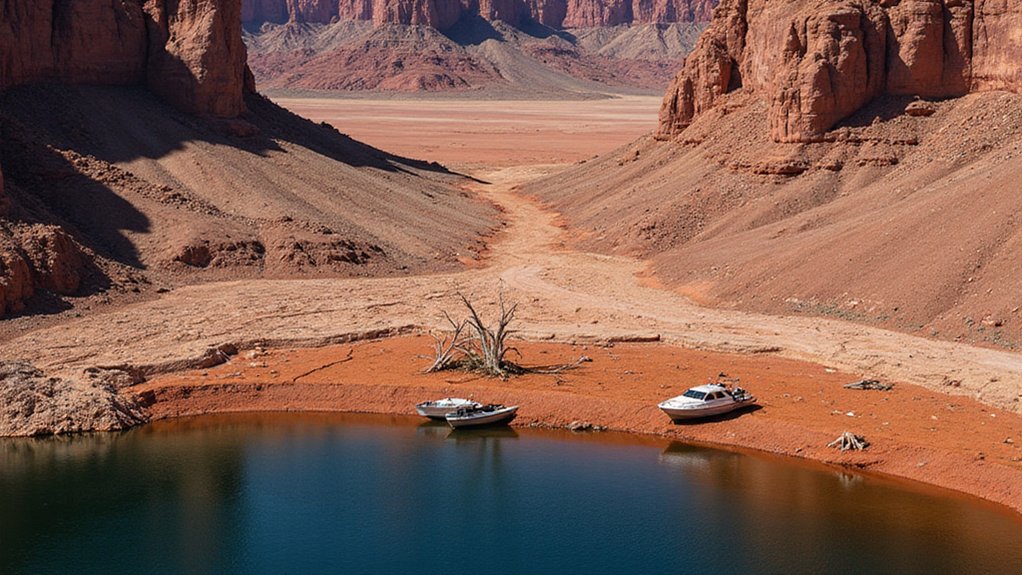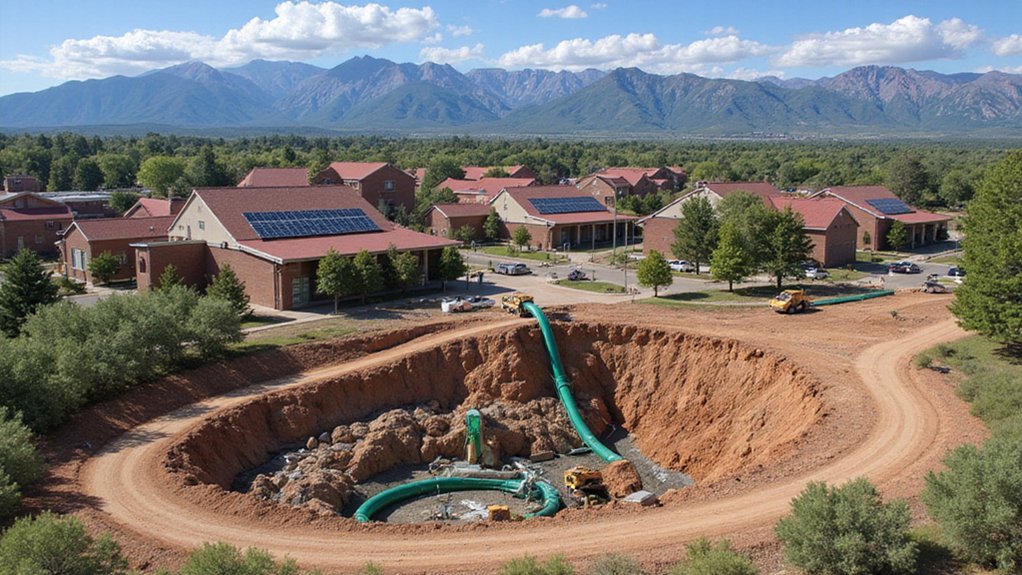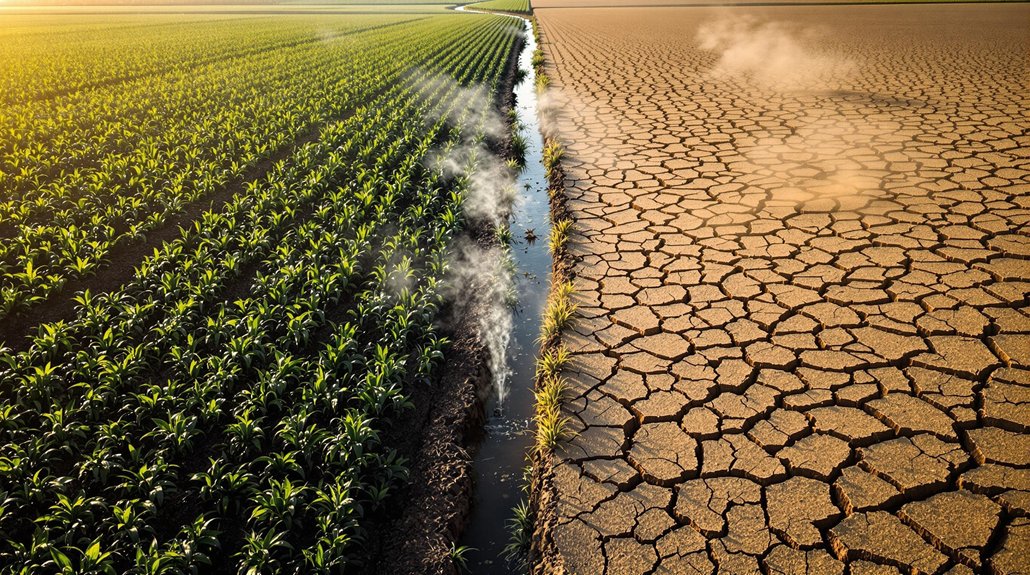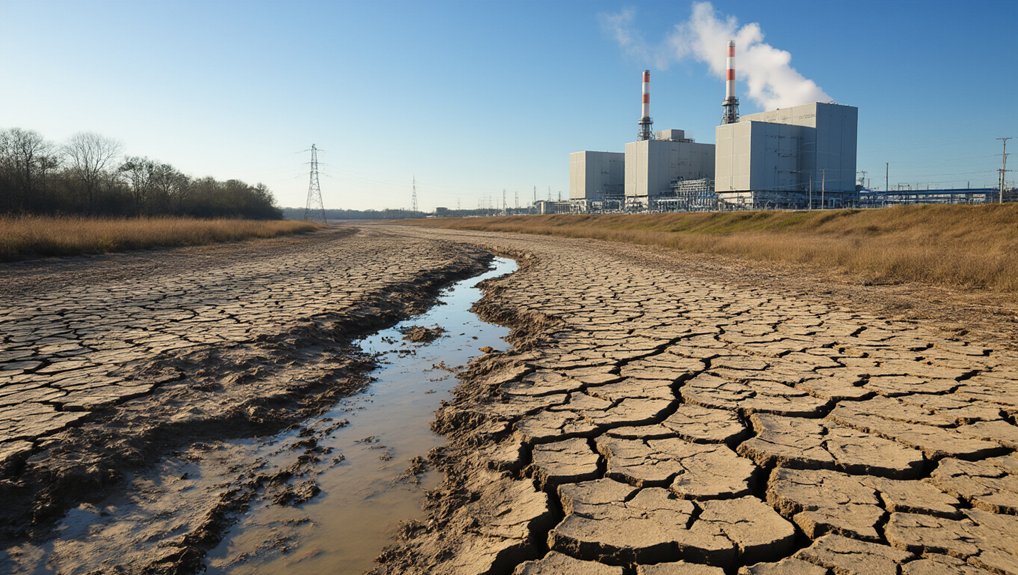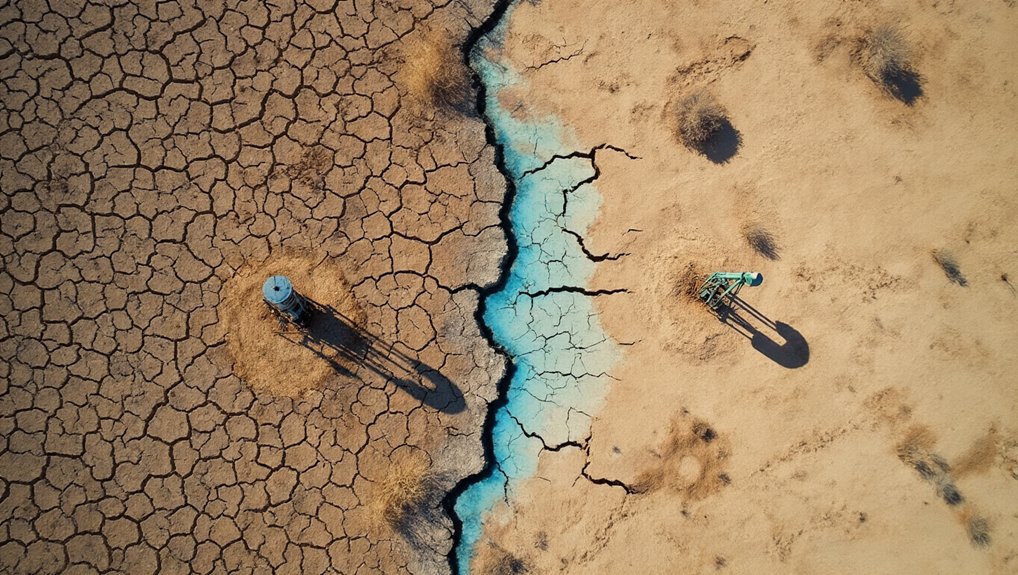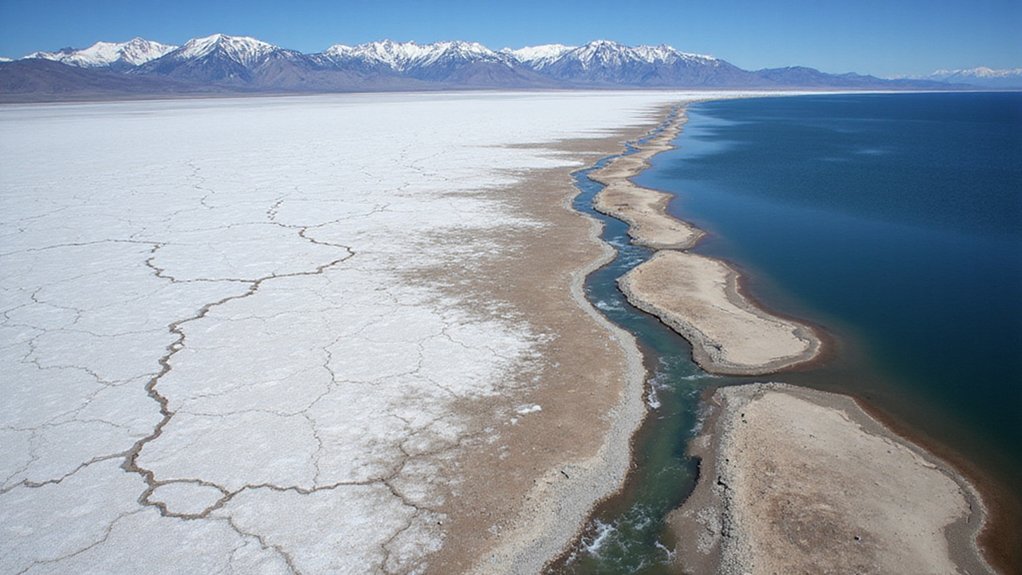Southwest reservoir levels are spiraling toward historic lows with major Colorado Basin storage projected to drop until early 2025. Lake Powell lost 803,000 acre-feet in just weeks. La Niña’s arrival promises even drier conditions ahead. Conservation efforts? Not enough. Interstate tensions are escalating while Mexico agreements crumble. Cities face water restrictions as Rio Grande reservoirs dip below 25% capacity. The clock’s ticking on finding solutions before taps run dry.
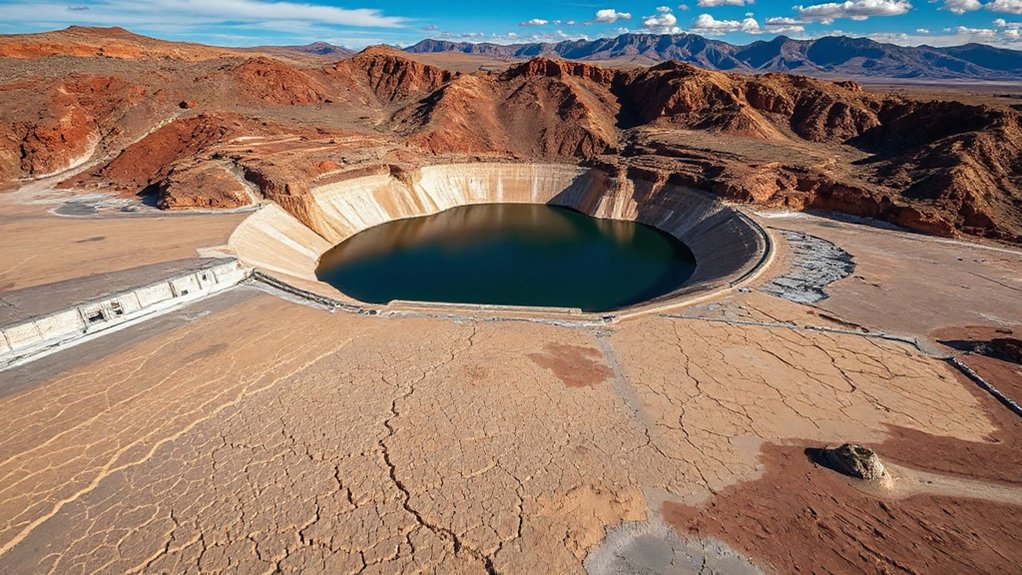
Despite conservation efforts and temporary gains in some smaller reservoirs, the Southwest’s water storage continues its alarming decline with major reservoirs across the Colorado River Basin projected to lose volume until at least early 2025.
The numbers don’t lie. Lake Powell lost a staggering 803,000 acre-feet between January and mid-March alone. That’s a lot of missing water, folks.
When combined with Lake Mead’s losses, the basin’s two largest reservoirs shed 476,000 acre-feet in just two and a half months. Sure, some upstream reservoirs managed tiny gains—golf clap for them—but the main storage facilities remain firmly in the red.
Local reservoirs tell a similar story. Routt County’s Stillwater, Yamcolo, and Stagecoach reservoirs probably won’t reach capacity. At least Fish Creek and Elkhead reservoirs typically fill annually.
Small comfort when Granby, Blue Mesa, Navajo, and Fontenelle continue their downward spiral.
The forecast? Not great. A predicted La Niña means drier conditions ahead. Just what the Southwest needs—less precipitation! Water levels hover uncomfortably close to the historic lows of 2022.
No new cuts for 2025, but that’s hardly reassuring when the structural deficit remains.
Interstate tensions are mounting faster than the water levels. Previous cooperative agreements with Mexico are fraying at the edges, with water shift proposals rejected for the first time in eight decades.
Cross-border diplomacy? More like cross-border desperation.
Conservation programs provide temporary boosts but can’t outpace the persistent drain. The urgent need for a joint management agreement by May highlights the severity of the water crisis facing states utilizing the Colorado River.
Texas and neighboring states face a stark choice: find new supply sources or drastically reduce demand.
Or both. Reservoir reuse, groundwater recharge, and new storage projects are being floated as solutions, but implementation takes time. Time the Southwest might not have.
Administrative calls for water management will likely mirror 2024 patterns, but with more complications from variable snowpack.
The Rio Grande Valley is particularly vulnerable with reservoirs currently below 25% capacity, forcing many cities to implement water restrictions.
The stakes couldn’t be higher for states depending on the Colorado River. Something’s gotta give—and soon.
